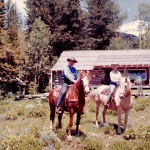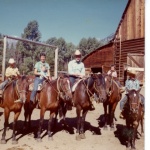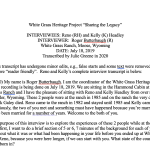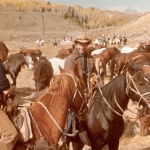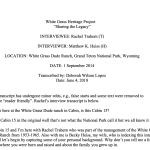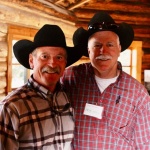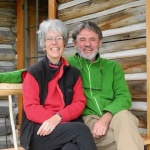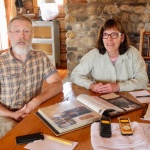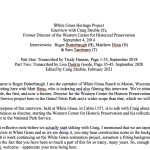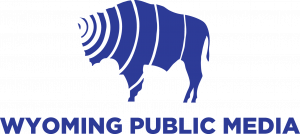The White Grass Heritage Project has captured over 70 hours of oral histories. These oral histories have been captured in film and/or audio formats and some have been transcribed and made accessible here. Only a sampling of the oral histories collected are presented in the section below.
The materials shared here cannot be reproduced in any form without written permission. If you have an inquiry about an oral history, or a suggestion to expand the collection, please contact us.
Oral History Index:
White Grass Ranch Pre-1985
Balderston, William IV & Ann: History of Sky Ranch on land purchased from Frank Galey
Cleary, Brian: Dude and wrangler, 1959-1970s.
Cuddy, Amy Clarke: Daughter to Ann, Amy was a dude at the ranch in 1971.
Cuddy, Ann Messler: Ann and her family were dudes, 1946-53; she became first female wrangler at the ranch, 1960’s.
Curran, Carol Boyer: Carol and her family were dudes, 1946-54; she brought her children to the ranch in the 1970’s.
Dellenback, Robert & Geraldine: They and their four children were dudes from 1972-74.
Densmore, Tamara: Daughter of Cynthia Galey Peck.
Dorff, Tom: Worked summer at White Grass; wrangler for Fall Hunting Camp, 1954.
Fox, Francis “Fran”: Nephew to Frank Galey with knowledge of his Frank’s early family life; had extensive conversations with Frank over many years.
Galey, Frank: Owner/operator of White Grass 1938-1985.
Hammond Family: Two nephews and a niece of Harold Hammond lived with their parents as caretakers at the ranch in 1917-19 while Harold served in WWI.
Headley, Reno & Kelly: Both were working on the ranch the day Frank Galey died; worked the entire season 1985.
Kinker, David: Son of Cynthia Galey Peck; junior wrangler at White Grass in 1977-79.
Lloyd, William “Dub”: Wrangler 1983 and ranch volunteer post 1985
Leach, Bill & Clare: Teenager Clare was a dude, 1966-67; returned with husband in 1983.
McPheron, Ken: Head Wrangler at White Grass, 1970-72
Mortensen, John: White Grass wrangler, 1970-71; wife, Pam, was the kiddy wrangler.
Ottman, Jayne: White Grass winter resident with 3 other women & no running water, 1974-75.
Peck, Cynthia Galey: Daughter of Frank and Inge Galey; came to the ranch as a pre-schooler after WWII; attended some boarding schools; and lived at the ranch off
and on into her early 20’s.
Quast, Dick & Cynthia: Dude, 1954-70; Fall horse drive, 1978; supporter of rehabilitation of WG.
Sandvig, Louisa Stephenson: She and her children were dudes, 1983-85.
Scattergood, Jay: Nephew to Frank Galey with knowledge of his Frank’s early family life; worked at the ranch.
Schmitt, Judith Allyn: Dude/wrangler 1955-60; and intermittently in the 1970’s and 1980’s.
Smith, Leonard: He and his family were dudes 1977-84; volunteered a week as a ‘wrangler’ opening the ranch, 1981.
Strawbridge, Francis & Mary Jo: Francis was a dude, 1952-53; wrangler, 1954-57; Francis, Mary Jo & two daughters were dudes in the 1980’s.
Trahern, Rachel: Ranch management 1953-65.
Tompkins, Patsy Hobbs: White Grass cabin girl with Liz Thayer Verney, 1969-70.
Verney, Liz Thayer: White Grass cabin girl with Patsy Hobbs Thompkins, 1969-70.
Vinson, Hal: Wrangler 1973-74.
Woodin, Elizabeth: Dude 1954+; Wrangler 1960-70’s.
Western Center for Historic Preservation Post-1985
Bricher-Wade, Sheila: State Historic Preservation Office staff & volunteer from 1980.
Butterbaugh, Roger: WG Caretaker 2011-2018; Coordinator of the WG Heritage Project from 2013-2022.
Cavicchioni, Pat: Assisted Jon Gerster and others dismantling the White Grass Barn, 1990.
Gerster, Jon: Purchased the White Grass Barn (1989); dismantled the Barn, 1990.
Hofley, Carole: Purchased/reconstructed the WG Barn on her property in Wilson; long time preservation advocate in Jackson..
Holtman, Pam: Cultural Resource Specialist, Grand Teton Park (2001-2006).
Pahl, Barb: National Trust for Historic Preservation 30+ year staffer who raised close to 1 million dollars for rehabilitation of White Grass Ranch.
Struble, Craig: First Director of the Western Center for Historical Preservation, 2005-2013.
White Grass on NPR: Start of Ranch Rehabilitation as NPS Training Center, 2008.
White Grass on Wymoing Public Radio: Summary of Ranch Rehabilitation, 2016.
Williams, Al: Project Manager in charge of moving 13 log structures from the JY Ranch (Rockefeller) to Moose and reconstructing the JY Shop to become the wood shop and offices for the Western Center for Historic Preservation at Park Headquarters. Al was also responsible for the rehabilitation of White Grass Ranch 2005-2016.
White Grass Ranch Pre-1985
William Balderston IV & Wife Ann
The property for Sky Ranch (approx. 13 acres) was purchased by William Balderston from Frank Galey. William and his wife, Susan, finished construction of three cabins in 1952. The ranch was designed as a family retreat for Balderston’s children and grandchildren and included a horse stable. The Balderston’s also had parties for many locals including the Muries, Dornans, Craigheads, and Hartgraves. William’s grandson, William IV, aka Biv, and wife, Ann, provide many details about happenings at the ranch over generations including pack trips, interactions with White Grass, William being on the cover story on Field and Stream Magazine, the sale of the ranch to the Park and life thereafter. William’s description of working on the Jackson Lake Dam Enlargement Project (1913-15) is included along with other documents of historical significance. Historical photos of significance are included.
Brian Cleary
Brain Cleary was brought to White Grass by his mother at about age 9. He returned many years as his mother stayed summers in the Homestead Cabin/Cleary Cabin as father visited periodically. At age 15, Brian became a wrangler for Frank. In his interview, Brain describes the life and responsibilities of a wrangler, always enjoying the young teenage dude girls, his first love affair with his horse Candy, leading many pack trips into the wilderness and growing up fast but loving the responsibility. He discusses the use of alcohol on the ranch, seeing the ranch operate during Frank’s two marriages, Frank’s abuse of his body, financial issues and the legacy of White Grass. According to Brian, “It was my most meaningful 12 years (ever)… it molded me… when I worked in NYC, I would say the skyscrapers were my Tetons… this (the ranch) was my home – body and soul… it was probably my most relaxing time of my life… I think my mother felt the same way.” Historical photos of significance are included.
Ann Messler Cuddy & Amy Clarke Cuddy & Carol Boyer Curran
Ann Messler Cuddy, sister, Carol Boyer Curran, and Ann’s Daughter, Amy Clarke Cuddy were interviewed at the White Grass Reunion, 2014. Ann and Carol described their developmental background that groomed them for an adult life of exploration in the wilderness. They first came to White Grass with their parents and grandmother post WWII in 1946 driving from Florida and returned many years. Ann worked summers at the ranch and became White Grass’s first female wrangler. They describe: living on a dude ranch that was also a working ranch with cattle, pigs and chickens, field irrigation, harvesting hay and lots of other chores; living in very spare conditions with no running water and limited cabin heat; and competing in the dude ranch parade and rodeo in Jackson. Ann brought her children to White Grass in 1971 and in 1974 and in 1971 met Carol and her children thus completing 4 generations of Messlers who came to WG as dudes.
Robert & Geraldine Dellenback
Bob and Geraldine (Dine) first came to White Grass in 1972 with their four children that ranged in age from 18 months to 8 years. Their time at the ranch, and in the west in general, was a welcomed change from living on the east coast where Dine felt she always had to have an eye on her children for their safety. By contrast, she felt more freedom in the west as did her children. Their oral history details their activities at the ranch, each year becoming a bit more experienced and adventuresome. Their adventures culminated in a 16-day pack trip north in 1974 originating at Turpin Meadows going north into the Yellowstone backcountry taking all four of their children the youngest being 3 years old. Because Frank Galey forgot to resupply them midway through their trip with all of the food they needed, they were left to supplement their diet with fish they caught everyday so they didn’t go hungry. Both felt that their time at White Grass taught their children important lessons in independence, problem solving, creativity and a profound respect and appreciation for the natural world. Later in life, Bob and Dine moved their residence to Jackson, WY. Their daughter Derrie and her family bought a ranch in the area.
Tamara Densmore & David Kinker & Cynthia Peck
[/one_third]
Tami Densmore and David Kinker join their mother, Cynthia Galey Peck for a discussion of Tami and David’s perspective on White Grass and their developmental experiences during and after ranch days. As a young teenager, David was hired for two summers to work on the ranch as a hand doing all sorts of jobs but found it difficult given how he was treated. Tami lived on the ranch summers as a very young child but chose to work summers as a teenager at the Triangle X ranch and Dornans rather than White Grass. Both describe their search for their own identities immersed in nature (living in desert, etc.) as their teacher, a process very similar to their mother. Both had experiences with their grandfather after his divorce and second marriage to Nona. Tami currently works for the federal government as an administrator and David is an artist and river guide during his summers.
Tom Dorff
At 16, Tom left Detroit and hitchhiked to Wyoming on $14.00 because he wanted to be a cowboy. He got a job at White Grass Ranch in 1954 doing maintenance jobs for room and board. Later that summer, he was paid for his work and ended up working the hunting camp in the fall as a wrangler for supervisor George Clover who taught him how to be a cowboy. Tom details the workings of the ranch and hunting camp, his relationships with Frank and Inge Galey, and his participation in the semi pro rodeo in Jackson. A short video clip of Tom talking about his experiences at White Grass can be seen here in the “Frank Galey Stories & Legendary White Grass Ranch” video.
Francis “Fran” Fox & Jay Scattergood
Francis ‘Fran’ Fox and cousin, Jay Scattergood, both nephews of Frank Galey spent considerable time over many years working on the ranch. Their mothers were sisters to Frank Galey. Many stories of Frank’s mother, Marian, are told that include: Frank’s early years living with Marian’s sister, boarded in a Catholic school at a very young age and enrolled in a private school in France along with his three sisters. (Frank’s father died of illness in Philadelphia prior to Frank’s birth leaving his mother a widow.) They also share stories of Frank in the military during WWII while Fran’s parents ran White Grass for one season; Marian’s fox farm, her second marriage to Harold Hammond and her involvement in the Jackson community: Frank’s ingenuity, e.g., growing vegetables on his heated back porch in the dead of winter; Frank’s relationship with his two wives; selling the ranch to the park and the friction that arose; and Fran being on the ranch during the auction of 1985. Both articulate the role the ranch played in their own development, coming to grips with Frank’s death and the ranch’s closure. “We both loved him” (Fran and Jay). Historical photos of significance are included.
Frank Galey
Frank Galey’s interview was conducted by Jo Anne Byrd from the Jackson Hole Historical Society and Museum. The document attached is a condensed summary of his oral history with some names and events omitted. Topics included: early White Grass homesteading history; Frank’s mother’s involvement at the BAR BC and later marrying Harold Hammond, owner of White Grass; Frank leaving Princeton University to run the ranch after Hammond died in 1938; ranch expansion for dudes beyond 3 cabins and a tent; poker earnings to pay the ranch mortgage; gambling in Jackson; impact of WWII; and selling the ranch to the park in 1955.
Hammond Family
Harold Hammond and Tucker Bispham homesteaded White Grass in 1913. While Harold served in WWI, his brother Arthur (and wife and four children), lived on the ranch as caretakers from 1917-1919. Three of Arthur’s children talk about their time on White Grass and area ranches. Topics include: ranch layout, chores and crew members; winter activities, learning to read in Geraldine Lucas’ cabin; fishing, hunting and food; Cissy Patterson (Countess Gizycka); homesteading in Gros Ventre Canyon; and life in early Jackson. Historical photos of significance are included.
Reno & Kelly Headley
Reno, reared in WY, worked as a wrangler at White Grass 1982-85; Kelly, from Illinois, worked 1985. Both describe in detail the events of July 6, the day Frank Galey died at his desk in his cabin. The overwhelming staff sentiment was that they would run the ranch for the duration of the season as Frank would have done – a tribute of their loyalty to him. Rick, head wrangler, managed Nona and was the go-between with staff and guests. Both describe other events that summer including a service for Frank at the Chapel in Moose/social event at Dornans; periods of grief and loss; making guests feel welcome and supported; and preparing for the ranch auction in September. Reno, a foster child with a ranch family in Jackson, thought of Frank as his father figure, supportive and instructive; Kelly found her ‘place’ at the ranch living the western lifestyle; and both found great strength emanating from relationships formed on the ranch. They were married years after their time at White Grass.
Bill & Clare Leach
Clare first came to White Grass with 40 youth on a bus from Tennessee for Episcopalian retreats that filled the ranch in 1966-67. She often returned as an adult and brought Bill, whom she married 1983. This interview details those religious retreats, a fall horse drive to Dubois, wrangler behavior, changes over time at the ranch and in Frank Galey, lessons learned and the life long impact of ranch experiences.
William “Dub” Lloyd
With a long generational history in Mississippi, William ‘Dub’ Lloyd got divorced, became despondent, lost all sense of purpose and saw no reason to continue living. With encouragement for his friend, he left home in an old truck and $920 to rodeo in Jackson, WY which he did. Soon thereafter, he was hired as a wrangler by Frank Galey at White Grass in 1983. Starting in 2017, he and his companion, Marilyn Smith, volunteered during three seasons at WG as skilled carpenters helping to rehabilitate the ranch as a training center. In summary, “I got to do all the cowboy life; I got to show horses, ride bucking horses, herd cattle in the desert, lead guests in the mountains, been able to stand feet from a bear, been able to see a cowboy jump out of an airplane without a parachute and have a role in a Marlboro commercial…Being at White Grass, I was judged by who I was instead of who my family was…it opened the doors to my mind and heart. It saved my life.” Historical photos of significance are included.
Ken McPheron
Ken McPheron, professional cowboy, worked as a head wrangler for Frank Galey from 1970-72. Though he was hired saying, “I wasn’t into punching dudes,” he was hired to shoe horses and other tasks. He knew how to pack horses and ended up leading pack trips with dudes into the wilderness south of Yellowstone. It was there that he got to know, on a personal basis, many ‘Philadelphia Blue Bloods’ and prominent people from other cities. In time, he discovered they were just people and he became friends with many. He was a good friend to Frank with whom he had many talks over a glass of gin. He helped organize filming Chevrolet commercials during fall horse drives to DuBois, WY. Ken left the ranch because of the turmoil with Frank’s wife, Nona and worked for Marlboro making commercials and later managing Dean Martin’s ranches. His oral history contains many White Grass stories known to few.
John Mortensen
John Mortensen’s introduction to western culture, nature and horses began early in his life in Salt Lake City as his father was a competitive jumper and showed horses. He also ran a shop in SLC selling and repairing saddles. John began his art career there making displays for the store. At 17, he began his wrangler experience at the R Lazy S dude ranch in Jackson, WY. In 1970, he and his wife, Pam, took employment at White Grass where, in his second year, John was head wrangler. Pam was a kiddie wrangler. John describes dude ranch operations/business models and their differences, and relations with park personnel/regulations. After running advertising efforts within corporations in SLC, he began to create bronzes and build a clientele. His success solidified his return to the Jackson area with his home and studio in Wilson. Once back in the area, he maintained a friendship with Frank and Nona Galey and had dinner with them the night before Frank died in 1985. John and Pam supported Nona and helped prepare for the ranch auction later that fall. Throughout this two-part interview, John talked of his connection and keen observations of the natural world and how that is an inspiration and guide to his artwork today. John’s artwork can be seen at https://www.mortensenstudios.
Jayne Ottman
Jayne Ottman lived the winter of 1974-75 at White Grass while working as a second shift ICU nurse at St. John’s Hospital in Jackson, WY. After her shift and accompanied by her dog, she frequently had to ski into the ranch, sometimes from Moose due to heavy snow and unplowed roads. She, along with three other women, had no running water, snow frequently on the floor blown in from gaps between logs in their cabin and only minimal heat from a wood stove which they fed with wood they split. She describes all those challenges and more; quality time spent with Frank and Nona Galey; frequent large winter parties at the Galey’s cabin; and the joy of finding oneself amidst the extreme challenges and beyond beautiful winter landscape. Her oral history reads like a meditation, an interaction of a young untested woman and the realities of a mystical, natural world that “feeds a grand meal to one’s heart. It is beyond delicious. It is beyond peaceful (which) all comes rushing at you…wild, beautiful and lovely.”
Cynthia Galey Peck
Part One: Cynthia Galey Peck was the daughter of White Grass Ranch owners, Frank and Inga Galey. Cindy’s in depth interview includes: Inga’s parents leaving Germany during WWII and living at the ranch; her adoption and coming to the ranch at age three; the stresses of a family business/finances; developmental experiences with Dad and Mother; surviving difficult winters; local schooling and boarding schools; seeing the world with and without eye glasses; being a hand on the ranch but no pay; the central role animals/horses played in her character development and the mountain refuge. Part Two: Cynthia continues talking about Rachel Trahern being like a second mother; blindsided that Dad sold the ranch to the Park when she was a teenager; not being a dude but not really staff; pack trips and being a kiddy wrangler; the dude ranches’ rodeo, gymkhansas and Sunday polo games; struggles from a challenged marriage, living in a tent with children, a divorce and being a single parent; being pushed off the ranch by Frank’s second wife, Nona; dad’s faults but everyone loved him; females could be wranglers too; ranch/Park relations; a new life in Arizona with Bill Peck, M.D.; mid-life working as a wilderness ranger for the Forest Service; how White Grass changed lives; the ranch’s legacy and presently a training center; and “The only constant in life is change.”
Dick & Cynthia Quast
Dick first came to White Grass after his wedding with his first wife and stayed in a cabin he called, ‘The Honeymoon Cabin.’ He and first wife returned many summers (1954-1970) but ceased once it was learned their son was allergic to horses. In his oral history with his second wife, Cynthia, he talks about the allure of the western landscape, the wonderful and interesting people he met at the ranch and his participation in the fall horse drive (1978) from White Grass over the mountains to DuBois, WY. He also describes his contributions to the conservation movement in WY and their (Dick and Cynthia’s) financial support for the rehabilitation of ‘The Honeymoon Cabin’ at White Grass.
Louisa Stephenson Sandvig
Reared in Philadelphia, Louisa Stephenson Sandvig first came to WY at age 10 as a dude at the A Bar A ranch in Cantlet, WY. As a young mother, she brought her children to White Grass from 1983-85. She describes sitting with Frank Galey for lunch in June of 1985 and thinking, ‘this might be the last time I see him.’ Frank died in July of that year. Additionally, Louisa describes the rustic conditions on the ranch, sitting around campfires with the wranglers and forging solid friendships, trips to Dornan’s in Moose for drinking and the many pleasures she had riding her horse in the mountains. Post 1985, Louisa stayed at the R Lazy S and makes comparisons between the two ranches. Attached to this oral history are descriptive notes she and her daughter have written about their time on the ranch.
Judith Allyn Schmitt
Growing up near Philadelphia, Judith chose a trip West and White Grass Ranch as a high school graduation gift from her father in 1955. She returned to work at the Ranch for many years, married a wrangler and often brought their two daughters to the Ranch who, in turn, worked there into the 1980s. Additionally, Judith describes staff as family, ranch activities, being with the guests, and how the Ranch and nature bonded her and her daughters.
Leonard Smith
Leonard Smith and his former wife, Melissa, were White Grass dudes from 1977-1984. He was a Midwesterner with no horse experience but came to thoroughly embrace cowboy and ranch life and found living by the ‘Code of the West’ (e.g., ‘You ride for the Brand’) foundational. He details many experiences he, his wife and two children had at the ranch including Leonard working as a ‘paid volunteer’ one June working alongside ranch wranglers to help open the ranch clearing trails, mending fences, feeding the herd and pulling fallen logs from the woods with horses. One highlight for both was participating in fall horse drives taking the WG herd (100+ horses) from the White Grass over the Gros Ventre Mountains to DuBois, WY for wintering – a six-day trip. On these trips, he performed several wrangler duties vs only being a dude tagalong – fun, challenging and affirming. Leonard was a professional designer for Lee Jeans creating western styles and once participated in the Cheyenne Frontier Days in full western dress. At the end of this oral history is Leonard’s daily journal detailing his week as a ‘paid volunteer.’
Francis & Mary Jo Strawbridge
Francis and Mary Jo Strawbridge brought their two daughters to White Grass as children in the 1980’s. Francis details his ‘dude ranch linage’ starting with his grandfather coming from Philadelphia and bringing his family to the Bar B C Ranch (1920’s). Later, Francis’ father brought his family to White Grass at the recommendation of Frank Galey’s sister, Mrs. Hennie Scattergood who was a neighbor in Philadelphia. After his first visit, Francis came back and became a White Grass wrangler as a teenager and college student. Additionally, Francis and Mary Jo detail ranch activities including Frank Galey’s July 4 barbecues that once included four sitting US Senators and the many lessons learned by all generations. Francis and Mary Jo brought all their family (1999-2000) and skied to White Grass on January 1, a perfect snow day and an amazing to start the new century.
Patsy Hobbs Tompkins & Liz Thayer Verney
Graduating college roommates, Liz Thayer Verney and Patsy Hobbs Tompkins wanted to do something adventuresome for their summer. So, Liz wrote Frank Galey about position openings and he hired the two of them to be ‘cabin girls’ responsible for cleaning the guest cabins, 1969-70. Arriving by plane, they expected to be met by some ‘old guy in a cowboy hat’ but instead were met by three ‘gorgeous’ young men literally from Harvard, Yale and Princeton. Their interview describes in detail their experiences being cabin girls working from the bath house where staff showered and they did ranch laundry; how the wages we low but they were paid with room, board and fun; being part of the ranch family; the struggles at the ranch under the leadership of Frank and Nona Galey; interesting stories about some of the guests; and the decline of the ranch though the allure and value for them transcends time.
Rachel Trahern
British born Rachel Trahern had a bird’s eye view of White Grass as she was part of the ranch management from 1953-1965. Though she was not responsible for barn staff and activities, she managed housekeeping, food services, organizing provisions for pack trips and made frequent trips to vendors in Jackson for supplies. She also oversaw preparation for Frank Galey’s famous July 4th barbecues with 100 guests or better. She arrived in the spring to open the ranch and departed after closing the ranch in the fall. Some winters, she traveled to Golden Rock, a resort in Nevis, British West Indies owned by Frank and Inge Galey and other investors. Rachel was on the ranch when Cynthia Galey was a young girl and her wedding in 1962. In her interview, Rachel talked about many ranch happenings including Frank’s two marriages, reflected on ranch changes, described activities in Jackson including gambling and planning the nine White Grass alumni reunions (post 1985) that she was instrumental organizing. Ranch and Golden Rock photos are included along with a 1962 White Grass/Golden Rock newsletter.
Hal Vinson
Hal Vinson, a wannabe horseman/cowboy/rodeo participant since childhood, worked as a wrangler at White Grass in 1973-74 shoeing horses, breaking horses, packing horses and lead several trips into the wilderness areas between Grand Teton Park and Yellowstone. Amidst many Frank/Nona Galey and White Grass stories, Hal describes the power of hard work and commonality in nature that contributes to life-long friendships, e.g., for 30 years after his ranch days, he and WG friends had done pack trips back into the wilderness north of the ranch. In summary, “Everything Frank Did was a story. He was quite the guy…a father figure.”
Elizabeth Woodin
[/one_half_last]
Born in the Philadelphia area, Elizabeth describes her education through college majoring in the arts and languages, travels abroad and the outdoors and natural history leading to her involvement in many environmental activities, some with her husband, Bill.
A White Grass dude at age 8 (1954+) and wrangler (1960-70s), Elizabeth focuses on her journey from Philadelphia, life as a dude, wondering the woods on horseback, being a kid wrangler, life-long relationships, the ranch under Frank’s two wives and the enduring impact of the ranch for generations.
Western Center for Historic Preservation Post-1985
Sheila Bricher-Wade
Sheila Bricher-Wade has a long and interesting personal and professional life around issues of historic preservation including confronting Park Administrators and organizing grass root preservation efforts. For many years (starting in 1980), she worked for the WY State Office of Historic Preservation (SHPO) handling Wyoming nominations to the National Historic Register. Lots of her work centered in the Grand Teton National Park where she helped to organize Historic Districts within the park deserving of protection. She also organized volunteer work parties over several decades of work in the park preserving historic structures. As she articulates, SHPO had a list of places in the Grand Teton Park that they (SHPO staff) were ‘willing to die for’ in order to protect, which included White Grass. Sheila also describes the process of searching to find a ‘repurpose’ for White Grass, an important component of preservation.
Roger Butterbaugh
Roger Butterbaugh was the first caretaker (2011-2018) at White Grass after dude ranch operations ended (1985). Roger describes the evolution of that role from working on ranch structures during rehabilitation, to helping to develop administrative procedures for residents, and then hosting volunteers and workshop participants staying at the ranch to learn/practice historic preservation. Part Two focuses on the evolution of the White Grass Heritage Project, which Roger coordinated for almost a decade, that was designed to document over 100 years of ranch history which included documents, historic photos, oral histories and artifacts. Part Three is a brief about rehabilitating the Main Cabin kitchen and Part Four is Roger’s bio focused on a life of service, woodworking, marriage and family therapy and then volunteerism. All of Roger’s White Grass work was done only with the support of his wife, Harriet. Historical photos of significance are included.
Jon Gerster & Pat Cavicchioni
Jon Gerster and Pat Cavicchioni describe: Jon purchasing the White Grass Barn at a Grand Teton National Park auction for dollar; how they and friends disassembled the Barn in the summer/early fall of 1990; and carting it off to storage before it was purchased by Norm and Carole Hofley, who reconstructed it in Wilson, WY. Jon and Pat also detail: stories told to them by former White Grass dudes and wranglers about the ranch as the WG’ers observed the barn coming down; how those stories solidified their own bonds to White Grass and its history; details of the efforts and ingenuity required to take the barn down by hand without access to any machinery; transporting it to a local ranch for storage via a truck and a snow mobile trailer; and their long term commitment to friendship and historic preservation. Historical photos of significance are included.
Carole Hofley
Carole Hofley and her husband, Norm, purchased the disassembled White Grass Barn from Jon Gerster in 1997 and, in 1998-99, reconstructed the barn on their property in Wilson, WY. Carole describes the many factors involved in moving barn parts to their property, gaining appropriate building permits, and entertaining former White Grass dudes and wranglers in the barn for periodic ranch reunions. Carole also makes a statement about the importance of historical preservation. Historical photos of significance are included.
Pam Holtman
Pam Holtman, historian for the National Park Service, worked for Grand Teton National Park from 2001 to 2006 during which time she was involved in doing an initial cultural assessment of White Grass and facilitating all the documents needed to forge a partnership between the NPS and the National Trust for Historical Preservation. In her oral history, she further documents how a new park superintendent broke precedent and began protecting park historic sites including White Grass. She further details the struggles across divisions within the NPS, working with local preservation boards and state preservation officials, White Grass Alumni and preservation architects to successfully: (1) rehabilitate White Grass as a NPS training center teaching historic preservation skills and (2) establish the Western Center for Historic Preservation (NPS) which managed the rehabilitation and now oversees the training program. On a personal note, she speaks to her professional satisfaction working on such a project and being present for the ribbon cutting ceremony at the ranch in 2016.
Barb Pahl
Barb Pahl has had a 30+ year career working for the National Trust for Historic Preservation. Barb talks extensively about the history of the preservation movement with detailed references to Congress and government programs; translating Secretary of Interior preservation standards into field work with the National Park Service; developing cooperative relationships; and the evolution of being a preservation professional across 3 decades. Her efforts, along with many others, forged a partnership between the Trust, donors, community leaders and the NPS to turn White Grass into a national center for teaching historic preservation skills. Through the Trust, she helped raise close to one million dollars toward the rehabilitation of White Grass Ranch. “I hope the lesson that White Grass will provide is that the greenest building is one that is already built (and) the best way to save something (like a building) is to use it… There is no better place to share stories than where they happened.”
Craig Struble
After historic preservation positions in Yosemite and Grand Canyon National Parks, Craig Struble was hired in 2005 as the founding Director to what would become the Western Center for Historic Preservation (WCHP) responsible for: the rehabilitation at White Grass Ranch; preservation projects in other national parks; and creating a historic preservation training center at the White Grass. Craig’s oral history details the never-ending challenges and successes finding funds for projects and employee salaries to keep WCHP afloat and progressing. Numerous photos are included depicting the numerous stages rehabilitating the 13 original log White Grass structures. Craig retired as Director in 2013 and reflects on his 40 years with the National Park Service. Historical photos of significance are included.
White Grass on NPR (2008)
[/one_half]
Al Williams
Long time Grand Teton National Park employee, Al Williams, was detailed (from his current position as a maintenance supervisor) into a new position to begin work stabilizing and rehabilitating log structures at the White Grass Ranch in 2005. That same summer he became project manager in charge of moving buildings from the JY Ranch (Rockefeller) into the Park for housing and for the creation of a wood shop/offices for the developing Western Center for Historical Preservation. In his oral history, Al describes all the challenges cutting log cabins into 2-3 pieces in order to fit on trucks able to travel down the curvy, tree lined Moose Wilson Road. The JY Shop/garage was dismantled into 14+ pieces, trucked and then reassembled in Moose. He also discusses how he and Bob Williams developed the shop into a sophisticated operation able to repair, restore and replicate historic windows and doors from White Grass and other national parks/historic sites in the west. Numerous historical photos are included.



